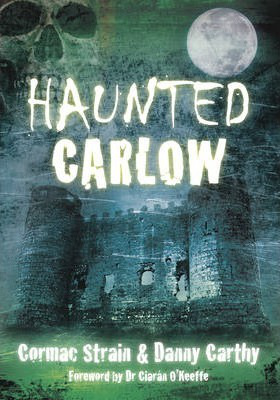Decades Long Dispute Over Smuggled Irish Cannon Resurfaces
Mythology/Folklore/History
Saturday 28th, December 2024
3 minute read.
A pair of rare bronze cannons, allegedly smuggled out of Irish waters in the 1970s by a group of British treasure hunters, have been at the centre of a diplomatic dispute between Ireland and the United Kingdom for decades, according to newly released archival documents from Dublin.
The cannons, measuring 2.75 by 1.8 metres, were reportedly salvaged from a shipwreck near the Metal Man navigation beacon at Tramore Bay, off Ireland's southeast coast. After being removed, the artefacts were allegedly sold in an Essex scrapyard for approximately €3,750 to a senior official from the Tower of London’s Royal Armouries. The discounted sale price was reportedly agreed without the buyer enquiring about their origin.
Irish officials have long contended that the cannons were illegally taken from their territorial waters and are part of Ireland’s cultural and historical heritage. Representatives from the National Museum of Ireland, the Department of Foreign Affairs, and the Chief State Solicitor’s Office made persistent efforts to convince UK authorities to return the artefacts.
The Maritime Institute of Ireland highlighted legal breaches during the acquisition, stating that both Irish and British law were violated by failing to report the cannons to the Receiver of Wreck, the statutory body responsible for recording salvaged items of significance.
Officials at the Tower of London, where the cannons have been displayed as a tourist attraction, initially denied that the artefacts had been removed recently from the seabed. They argued there was "no evidence" of their Irish origin, suggesting the story of their removal from Tramore Bay might have been fabricated as a cover for their true provenance.
Amid the controversy, UK authorities expressed concerns about the potential for heightened tensions. A 1993 report referenced fears that the Provisional IRA could exploit the dispute to target the Tower of London or its officials.
By the 1990s, each cannon was valued at approximately €35,000. Their significance extended beyond monetary worth, with Irish officials considering them an irreplaceable part of their maritime heritage.
Reports about the cannons' origin first surfaced in Irish newspapers such as the now defunct Sunday Press and the Times, bringing the case into public focus. These investigations claimed the artefacts were removed from the wreck of a ship thought to have sunk in Irish waters.
Under international maritime law, artefacts recovered from a shipwreck are generally considered the property of the state in whose waters they are discovered. Ireland has repeatedly invoked these principles to press for the return of the cannons.
The case aligns with broader trends in the repatriation of cultural heritage items. Museums and institutions worldwide are increasingly under pressure to return artefacts acquired under questionable circumstances to their countries of origin.
The Royal Armouries previously stated they wished to “resolve the controversy” but have not formally repatriated the cannons. Meanwhile, Irish officials have continued to seek their return, arguing the artefacts are an integral part of Ireland’s rich maritime history.
Debates over the rightful ownership of cultural treasures persist globally, the case of the Tramore Bay cannons serves as a reminder of the complex interplay between history, law, and diplomacy.
The cannons, measuring 2.75 by 1.8 metres, were reportedly salvaged from a shipwreck near the Metal Man navigation beacon at Tramore Bay, off Ireland's southeast coast. After being removed, the artefacts were allegedly sold in an Essex scrapyard for approximately €3,750 to a senior official from the Tower of London’s Royal Armouries. The discounted sale price was reportedly agreed without the buyer enquiring about their origin.
Irish officials have long contended that the cannons were illegally taken from their territorial waters and are part of Ireland’s cultural and historical heritage. Representatives from the National Museum of Ireland, the Department of Foreign Affairs, and the Chief State Solicitor’s Office made persistent efforts to convince UK authorities to return the artefacts.
The Maritime Institute of Ireland highlighted legal breaches during the acquisition, stating that both Irish and British law were violated by failing to report the cannons to the Receiver of Wreck, the statutory body responsible for recording salvaged items of significance.
Officials at the Tower of London, where the cannons have been displayed as a tourist attraction, initially denied that the artefacts had been removed recently from the seabed. They argued there was "no evidence" of their Irish origin, suggesting the story of their removal from Tramore Bay might have been fabricated as a cover for their true provenance.
Amid the controversy, UK authorities expressed concerns about the potential for heightened tensions. A 1993 report referenced fears that the Provisional IRA could exploit the dispute to target the Tower of London or its officials.
By the 1990s, each cannon was valued at approximately €35,000. Their significance extended beyond monetary worth, with Irish officials considering them an irreplaceable part of their maritime heritage.
Reports about the cannons' origin first surfaced in Irish newspapers such as the now defunct Sunday Press and the Times, bringing the case into public focus. These investigations claimed the artefacts were removed from the wreck of a ship thought to have sunk in Irish waters.
Under international maritime law, artefacts recovered from a shipwreck are generally considered the property of the state in whose waters they are discovered. Ireland has repeatedly invoked these principles to press for the return of the cannons.
The case aligns with broader trends in the repatriation of cultural heritage items. Museums and institutions worldwide are increasingly under pressure to return artefacts acquired under questionable circumstances to their countries of origin.
The Royal Armouries previously stated they wished to “resolve the controversy” but have not formally repatriated the cannons. Meanwhile, Irish officials have continued to seek their return, arguing the artefacts are an integral part of Ireland’s rich maritime history.
Debates over the rightful ownership of cultural treasures persist globally, the case of the Tramore Bay cannons serves as a reminder of the complex interplay between history, law, and diplomacy.



